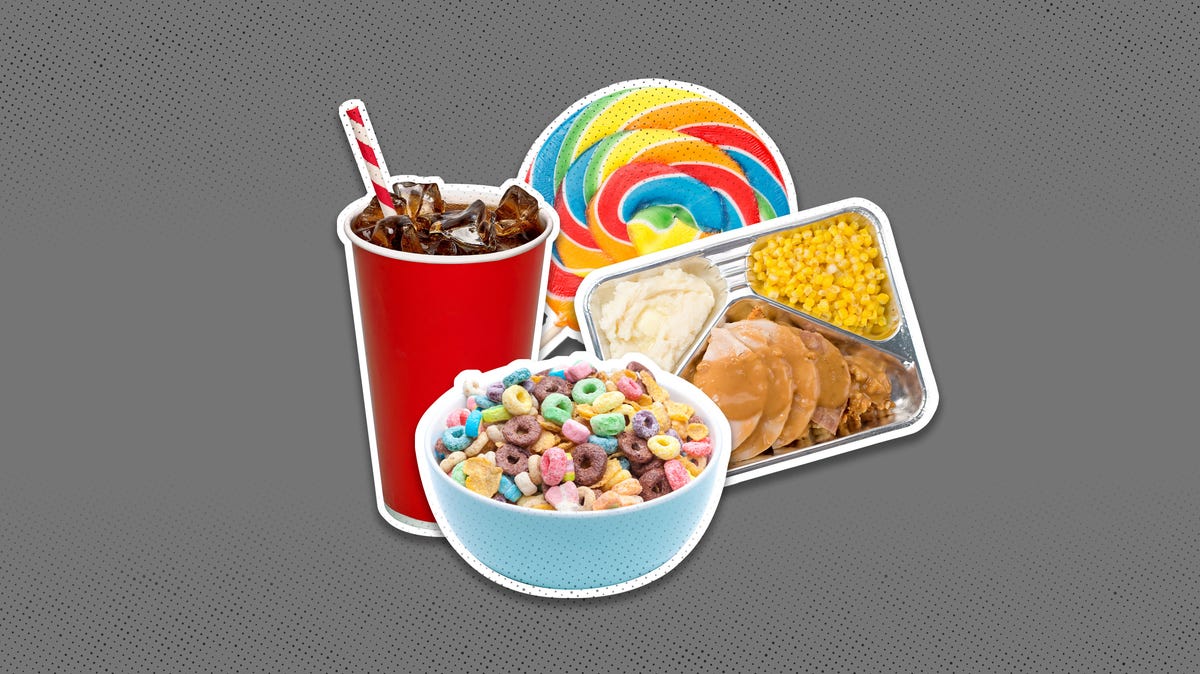After decades of studies pointing to the adverse health outcomes related to ultra-processed foods ‒ often cheap and highly addictive, containing long lists of additives, artificial flavors and preservatives ‒ the U.S. is shifting toward formally regulating the foods that are linked to childhood obesity, cancer, heart disease and Type 2 diabetes.
American food giants like Walmart’s Great Value brand, General Mills, Kraft Heinz and more are pledging to remove additives like synthetic dyes, certain preservatives and artificial sweeteners from their foods.
In the United States, more than half of the calories consumed at home by both adults and children come from ultra-processed foods, or UPFs, according to a 2025 analysis from the National Center for Health Statistics that looked at data collected in two years between August 2021 and August 2023.
What are ultra-processed foods?
UPFs are essentially factory-made formulations produced largely from refined ingredients, additives (including colorings and preservatives) and little to no whole foods.
In 2009, researchers at the University of São Paulo, Brazil, introduced a food classification system called Nova that attempts to sort foods into four groups ranging from unprocessed to ultra-processed:
Using artificial flavors and sweeteners, UPFs are designed for more addictive, palatable tastes and longer shelf life. They’re typically higher in sugar, salt and unhealthy fats, and devoid of nutrients and fiber.
Common UPFs include sweetened beverages like soda, packaged bread, potato chips, instant noodles and sweetened breakfast cereals.
Why are ultra-processed foods unhealthy?
Ingesting UPFs has been associated with more than 30 health conditions, including Type-2 diabetes, heart diseases, mental health disorders and obesity. A diet heavy in UPFs has also been linked to a greater risk of arthritis and increased fat within thigh muscles.
UPFs are typically high in calories and formulated to taste good, so it’s easier to overeat. Consuming too many calories paves the way for obesity and related diseases like Type 2 diabetes. UPFs also lack important nutrients that the body needs to function, notably dietary fiber, protein, vitamins and minerals.
What can I do to limit my intake of ultra-processed foods?
While shopping at the grocery store, stick to buying foods from the perimeter as much as you can for minimally processed whole foods like produce, meats and dairy products.
When you do venture into the aisles, try to stick to whole foods like uncooked rice and beans, frozen fruits and vegetables, and plain nuts and seeds.
There are many phone apps that shoppers can use in the grocery store to scan product barcodes and gauge how healthy food items are, like Yuka, Bobby Approved and Fooducate.
When purchasing processed foods, check the ingredients to see how much processing went into the item. In the snapshots below, common UPF ingredients are easy to spot in a range of popular foods.
Recent moves in 2025 could point to changes in UPFs
In September, the Make America Healthy Again Commission released a strategy to “make our children healthy again” that includes over 120 initiatives aimed at reversing the prevalence of childhood chronic diseases. A main focus of the commission, chaired by Health and Human Services Secretary Robert F. Kennedy Jr., is to reform dietary guidelines, which include defining UPFs.
And in January, California Gov. Gavin Newsom released an executive order aimed at cracking down on ultra-processed foods in the state via actions including the addition of more warnings to food labels and investigations into the impacts of synthetic food dyes.
SOURCES National Center for Health Statistics; Mayo Clinic; Getty Images; USA TODAY reports

